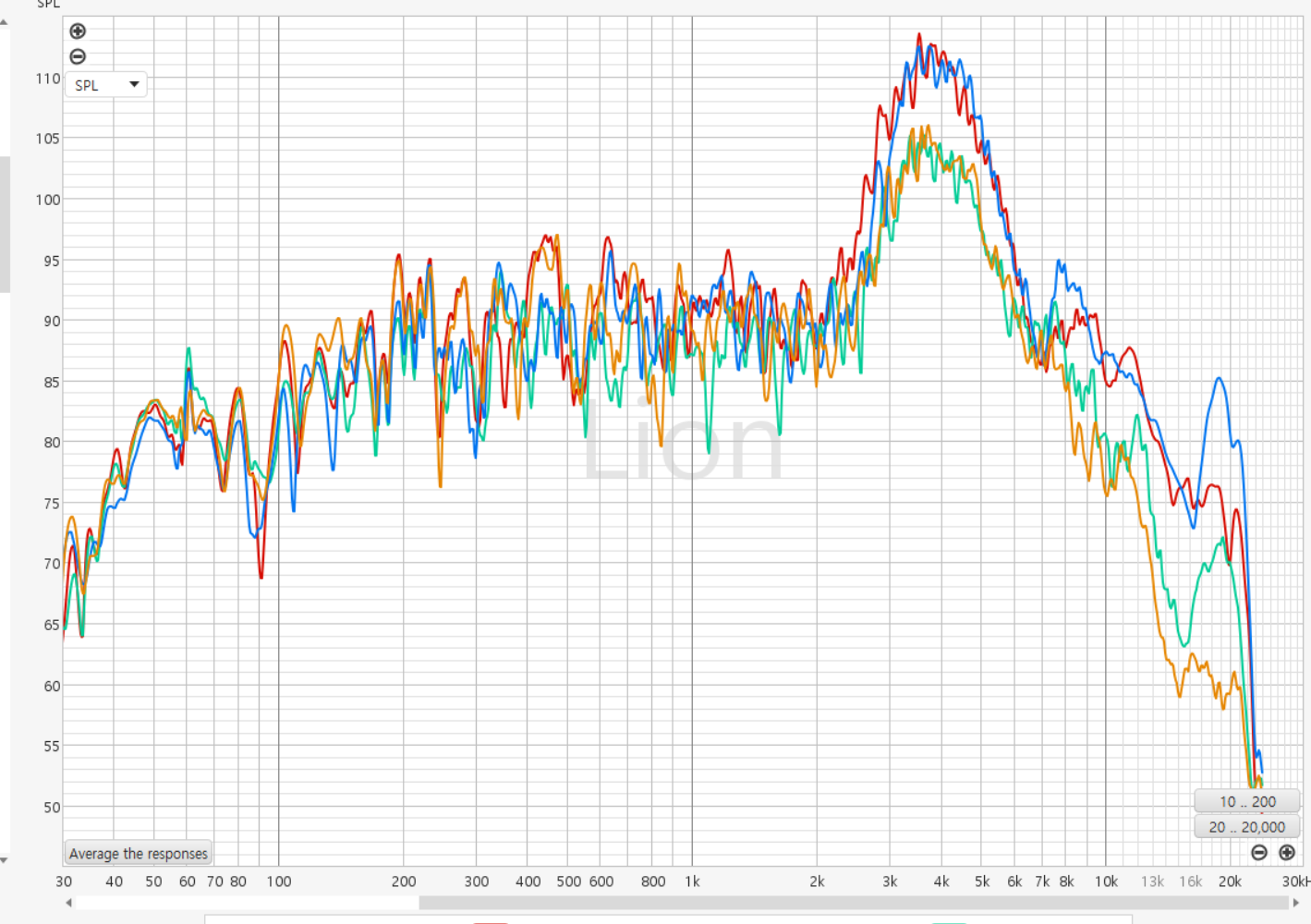I got hesuvi working properly
good !
I'm glad it works.
Of course, you can also convolve directly in the apo with the command that reo told you, but it will be more complicated if it becomes 7 channels instead of 2 channels, and it is easier to write with one hesuvi.txt file.
What did you do exactly to elevate the bass this way?
There are two (or more options).
1. One is doing EQ. - This can fix the tone balance to some extent, but you can't delete the room mode in the room or change the reverberation at all. (Until group delay)
2. The other one is a synthesis. It's like aligning a subwoofer with a speaker in real life, aligning a different bass response to your response.
The bass is hardly affected by hrtf, and there is no individual variation.
And it's a bit more convenient to synthesize because it's quite expensive to effectively control the bath in a normal space. (Of course, you can use the decay function of the impulcifer to cut some reverberations, but it's a bit of a different story because reverberations are cut off and the problem with the room doesn't disappear.)
The change to decay fixed the reverb issues basically entirely as well
good.
Is your space big?
Of course, some reflections can be understood if the recording distance exceeds approximately 3-5 m.
But when I converted the distance feet you mentioned into m units, it was close.
So we decided that the original recordings had quite a lot of reverb.
Generally, 100ms to 200ms is enough to give you some feeling.
It would be more convenient to manipulate and synthesize by applying an additional vst to a response of 100 ms.
I will also see about room treatment in the future as per your suggestion.
It's just my recommendation. Don't worry too much. I and other users are just saying things that will most benefit you in their own experience based on the limited information you've given us.
If you think you can hear it well now, you can keep it as it is.
Music brings tears to my eyes when played with this virtualization
lol
I often listen to brir in the forest.
It may be a sudden story, but it also comes out of the blue in the paper.
Apparent source width (ASW) is heavily influenced by visuals as well.
The size of the display I'm seeing (such as a smartphone, a 27 inch monitor, a screen size like a movie theater) or the open plains, forests, or closed eyes at all to provide visual information. ---> Our brains are smart, but they are more stupid than you think. So we have to cheat well.
The experience will be different because the brain correction will change depending on this.
I have a personal opinion that the final destination of BRIR is how much better to trick the brain after all.
I can understand the appreciation of your tears, and I'm hoping even more that you'll hear unreal sounds in the future that you can't get in real life.
Congratulations
First of all, congratulations once again on how well it plays.
Not only stereo, but since I'm measuring it by turning my body around
It would be fun to record the center (0 degree mono), the side (90 to 110 degrees), and the rear (140 to 150) together.
On top of that, you can play virtual 7.1 using VB cable and have a fun experience through upmixing stationery.
Lastly, I'm answering using a translator, so my words might be a little weird. Please understand!

































